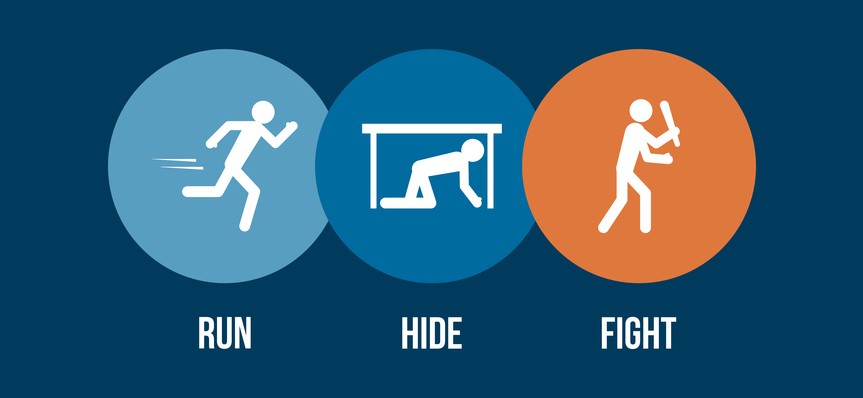Why Domestic Violence Is a Factor in Workplace Violence
You Owe Your Employees a Safe Workplace
Even as we paid special attention to this important issue during October’s Domestic Violence Awareness Month, we know that domestic violence affects the lives of Americans every day. And due to COVID-19, domestic violence has become even more dangerous with a tremendous spike in incidents of abuse as victims are forced to spend more time at home with their abuser. We know that domestic violence is a factor in workplace violence and Futures Without Violence gives you several compelling reasons to address it. So what are you doing to protect victims of domestic violence and prevent workplace violence at your organization?
The Centers for Disease Control reports that alarmingly 1 in 4 women and 1 in 10 men have experienced some form of domestic violence in their lifetimes. In the U.S., an average of 20 people experiences intimate partner physical violence every minute, which equates to more than 10 million abuse victims annually, according to The National Coalition Against Domestic Violence. Domestic violence affects people of any race, age, gender, sexuality, religion, education level, or economic status; anyone can be a victim—or perpetrator—of domestic violence.
You need to educate yourself and your organization about domestic violence in order to design an effective workplace violence prevention program that protects your employees. From defining it, identifying signs of it, and supporting your employees impacted by it, we’ll get you started—and help you incorporate the policies and procedures you need to ensure a safe and secure workplace.
Domestic violence is a pattern of abusive behavior in a current or past intimate relationship where a partner uses actual, attempted, or threatened harm to gain or maintain control by using different types of violence:
• Physical: intimidating partners with weapons like guns, knives, bats, or mace with intentions to injure, harm, or disable them
• Psychological: actions, comments, and behavior that insult, demean, or shame the partner, especially in front of other people
• Sexual: pressuring the partner to have sex or perform sexual acts they’re not comfortable with by force and without consent
• Financial: controlling finances in the household without discussion, including taking a partner’s money or refusing to provide money for necessary expenses
• Social: preventing or discouraging partners from spending time with friends, family members, or peers
• Spiritual: preventing participation, ridiculing beliefs, or using beliefs to manipulate partners
• Stalking: engaging in a course of conduct directed at a specific person that would cause a reasonable person to fear for his or her safety or the safety of others or suffer substantial emotional distress
Domestic violence is about power and control. If someone feels they are losing that power and control over their intimate partner, they might proceed on a pathway to violence to maintain power and control. Domestic violence falls among the fourth type of workplace violence—personal relationship—which occurs when someone unrelated to the workplace but personally related to someone at the workplace comes to the workplace with intent to do harm to their intimate partner or anyone trying to protect that person.
According to the Department of Labor, domestic violence accounted for 27% of violent events in the workplace. Based on that statistic and those already mentioned, it’s likely that some of your co-workers, and your friends and relatives, are currently experiencing or have experienced domestic violence.
You can mitigate the threat of someone with a personal relationship to an employee coming to your workplace to do harm by understanding some warning signs of this type of violence:
• The victim could show symptoms such as increased fear, emotional episodes, and/or signs of physical injury.
• Victims, as well as perpetrators, could also show signs of work performance deterioration.
• You might be aware of threats or concerning posts on the perpetrator’s social media.
Additionally, workplace violence prevention training teaches your employees how to use their situational awareness to recognize the importance of “see something, say something”—and what that “something” is—how to and to whom to report concerning behavior, and how your policies and procedures protect them all. An anonymous hotline can make it easier for employees to report, a workplace violence policy emphasizes your commitment to employee safety and well-being, and a top-tier employee assistance program (EAP) provides support and resources for employees to get the help they need.
Whether you see signs of domestic violence at your workplace or not, you know it’s happening. Your safe workplace environment is built on all employees demonstrating compassion and understanding in a judgment-free zone where victims feel comfortable disclosing information to management without fear of reprisal, understand their access to medical and legal services, and are able to succeed in a workplace that prioritizes the safety and well-being of every employee. Your consistent goal is to support victims by providing a safe place for them to seek help, without stigma, the fear of losing their jobs, or experiencing negative consequences at work.
To ensure a safe and secure workplace, you must protect all employees from workplace violence and help employees affected by domestic violence:
• Implement a comprehensive workplace violence prevention program that focuses on protections for victims of domestic violence and includes training for all employees.
• Assure employees you will maintain confidentiality so they feel comfortable disclosing information to management without fear of reprisal, adverse effects on their job status, or retaliations of any kind.
• Recommend a workplace safety plan to protect the employee with accommodations for workspace, hours, projects, and escorts out of the building, among other things.
• Create a supportive environment so employees inform you of existing restraining orders and escalations in threats, violent behavior, or other information that could lead to violence at the workplace.
• Ensure your employees understand the laws in each state that specifically protect victims of domestic violence as well as applicable provisions of the Family Medical Leave Act (FMLA).
• Offer information on the EAP and national and local resources such as:
• National Domestic Violence Hotline, 800.799.7233, https://www.thehotline.org/
• National Coalition Against Domestic Violence, 303.839.1852, http://www.ncadv.org/
• Futures Without Violence, 415. 678.5500, https://www.futureswithoutviolence.org/
• Safe Horizon: 24-hour hotline, 1.800.621.HOPE (4673), https://www.safehorizon.org/
What Can We Do?
As many organizations are operating with a combination of remote and on-site employees, your workforce must understand that the new workplace extends to the home. More people than ever before are working from their residences or quarantined, and employers need to prepare for an increase in their employees’ need for mental health and domestic violence support. Accordingly, EAPs are responding to more requests for mental health resources and domestic violence hotlines have experienced an increase in calls. Virtual training allows employees to train from their homes and can increase awareness about COVID-19-related and workplace violence safety and security measures.
Safety Is Your Top Priority
Domestic violence thrives in a culture of silence. Workplaces and communities can support victims, their children, and families by working together to create a safe work environment through awareness, education, and a commitment to safety and security as part of a comprehensive workplace violence prevention program.
We’re Here to Help
You are committed to protecting your employees. We can help you determine next steps to create or enhance your safe and secure workplace, especially as employees return to your businesses or continue to remain at home. Contact Mike Verden at [email protected] or 312.515.8747 to discuss what’s on your mind and visit https://lakeforestgroup.com/services/workplace-violence-services/.










